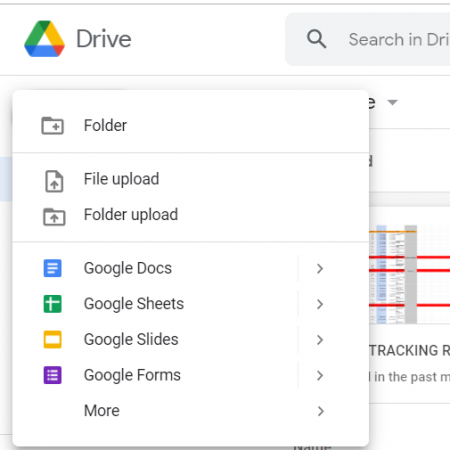5 Easy Ways to Export Google Sheets to Excel

In today's data-driven world, the ability to efficiently export Google Sheets to Excel can significantly boost productivity. Google Sheets, part of Google Workspace, offers unparalleled collaboration features, while Microsoft Excel remains the gold standard for in-depth data analysis and visualization. Here, we delve into five easy, step-by-step methods to convert your Google Sheets data into Excel format, ensuring you harness the power of both platforms seamlessly.
1. Direct Download as Excel File

The simplest way to export a Google Sheets to Excel involves just a few clicks:
- Open your Google Sheets document.
- Click on File in the top menu.
- Choose Download from the dropdown menu.
- Select Microsoft Excel (.xlsx) from the list of file formats.
Your Google Sheets data will be downloaded to your computer as an .xlsx file, ready to be opened and further edited in Excel.
📌 Note: Formulas, formatting, and some functions in Google Sheets may not translate perfectly into Excel. Keep this in mind when reviewing your exported files.
2. Use Google Drive

Google Drive offers an alternative route for those who prefer a more traditional file management approach:
- Access your Google Drive account.
- Find the Google Sheets file you wish to convert.
- Right-click the file or click the three vertical dots icon if on the web interface.
- Go to Download and select Microsoft Excel from the options.
This method might be preferred if you are already working with multiple files in Google Drive or if you need to batch download multiple sheets.
3. Add-Ons

For those needing more control over the export process, several add-ons are available:
- Sheetgo: Ideal for regularly exporting sheets with scheduled updates.
- Coupler.io: Useful for importing and syncing data from Google Sheets to Excel.
- Save As Doc: Converts sheets to different formats, including Excel, with additional features.
To use these add-ons:
- Open your Google Sheets file.
- Go to Add-ons > Get add-ons.
- Search for the add-on you need and install it.
- Follow the add-on’s instructions to export your sheet to Excel.
💡 Note: Add-ons can significantly enhance your workflow by automating repetitive tasks. Consider the additional functionalities they offer when choosing the right tool for your needs.
4. Publish to Web

Google Sheets also offers a “Publish to Web” feature that allows you to generate a URL for your sheet which can then be opened directly in Excel:
- Open your Google Sheets file.
- Click on File > Share > Publish to web.
- Choose Microsoft Excel as the format from the dropdown menu.
- Click Publish and then OK when prompted for confirmation.
- Copy the generated link.
When you open the URL, it will prompt you to open the file in Excel. This method provides an easy way to share data with users who might not have Google accounts.
5. Google Sheets API

For a more programmatic approach, the Google Sheets API can be used:
- Set up Google Sheets API by following Google’s Developer Guide.
- Use a language like Python or JavaScript to write a script that fetches data from your Google Sheet and exports it to an Excel file.
Here is a simple example using Python with the google-api-python-client library:
from googleapiclient.discovery import build
from google.oauth2.credentials import Credentials
import pandas as pd
creds = Credentials.from_authorized_user_file('credentials.json', ['https://www.googleapis.com/auth/spreadsheets.readonly'])
service = build('sheets', 'v4', credentials=creds)
spreadsheet_id = 'your-spreadsheet-id'
range_name = 'Sheet1!A1:Z'
result = service.spreadsheets().values().get(spreadsheetId=spreadsheet_id, range=range_name).execute()
values = result.get('values', [])
df = pd.DataFrame(values[1:], columns=values[0])
df.to_excel('exported_sheet.xlsx', index=False)
This method requires some programming knowledge but offers the most flexibility and automation for advanced users or businesses.
💾 Note: This method is best suited for those with some programming background or for organizations looking to integrate Google Sheets data into existing systems.
The power of Google Sheets lies in its collaboration features, whereas Excel offers unparalleled analytical tools. By mastering the export methods outlined above, you can leverage both platforms to enhance your productivity. Whether you choose to directly download, use add-ons, publish to web, or leverage the Google Sheets API, the seamless integration of data between these two environments ensures you're always working with the best tool for the job at hand.
What happens to Google Sheets formulas when exporting to Excel?

+
Formulas in Google Sheets generally convert to Excel, but compatibility issues can arise. Some functions might be renamed or behave differently, so it's important to review the exported file for accuracy.
Can I export only a portion of my Google Sheets?

+
Yes, by creating a named range in Google Sheets, you can export only that portion of the sheet by specifying the range in the URL or using an API.
Is it possible to automate the export process?

+
Absolutely. Using add-ons like Sheetgo or writing scripts with the Google Sheets API allows for automated, scheduled exports to Excel.
How do I handle conditional formatting when exporting?

+
Conditional formatting might not translate perfectly from Google Sheets to Excel. You'll need to manually recreate any complex rules in Excel.
Remember, the choice between Google Sheets and Excel often comes down to your specific needs at the moment. Google Sheets provides real-time collaboration and seamless cloud access, while Excel offers powerful analytical tools and advanced charting capabilities. By mastering these export methods, you can fluidly transition between the two platforms, ensuring your data is always at your fingertips, ready for analysis or sharing.



